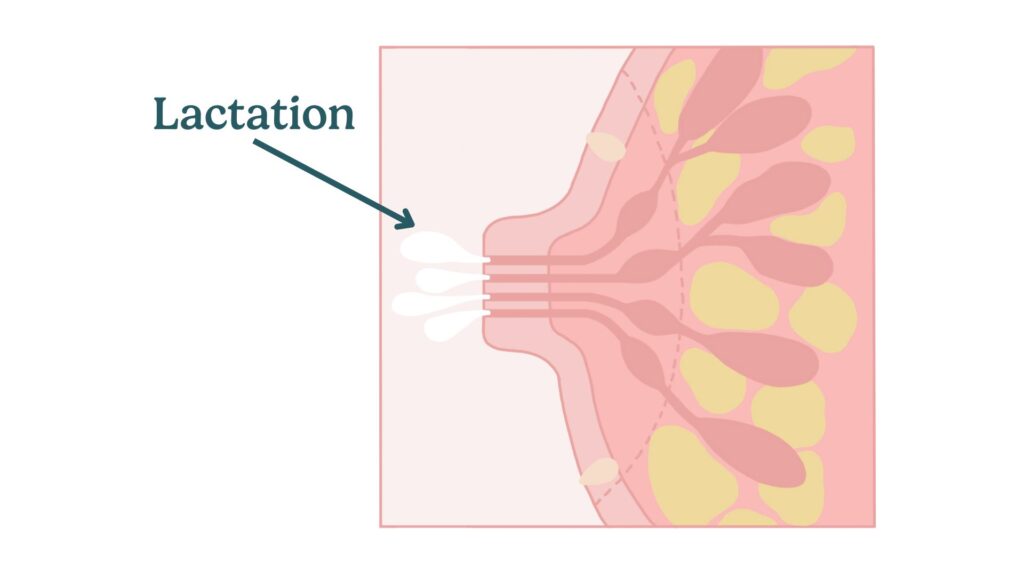lactation

Lactation
Lactation is the process by which your body produces milk to feed your baby. It starts during pregnancy and continues after birth. The process is driven by hormonal changes, primarily involving prolactin and oxytocin, which stimulate milk production and release.
What to watch out for
During lactation, you might experience several common issues that you should be aware of:
- Engorgement: This is when your breasts become overly full of milk, causing them to feel hard and painful. To relieve engorgement, breastfeed frequently, ensure a proper latch, and use cold compresses after feeding. Learn more about managing engorgement.
- Blocked ducts: A blocked milk duct can cause a painful lump in your breast. To resolve this, continue breastfeeding or pumping, gently massage the affected area, and avoid heat (dry or moist). Learn more about plugged ducts and how to prevent them.
- Mastitis: This is an infection of the breast tissue that results in pain, swelling, redness, and flu-like symptoms. If you suspect mastitis, continue breastfeeding and seek medical help promptly as antibiotics may be needed. Read up on mastitis.
- Low milk supply: Some mamas may struggle with producing enough milk. Frequently breastfeed, maintain a proper latch, and consult a lactation consultant if you have concerns about your milk supply. Read this list of ways you can increase your supply.
If you experience persistent pain, signs of infection, or ongoing issues with milk supply, seek advice from a healthcare professional or lactation consultant.
Physical limitations or health circumstances
Certain conditions can impact your ability to lactate effectively:
- Hormonal imbalances: Conditions such as polycystic ovary syndrome (PCOS) or thyroid disorders can affect hormone levels, impacting milk production. Proper management of these conditions is essential for supporting lactation.
- Breast surgery: Previous surgeries, like breast reductions or augmentations, may affect the milk-producing tissue and ducts, potentially impacting your ability to produce and release milk.
- Diabetes: Diabetes can delay milk production. Monitoring and managing blood sugar levels during pregnancy and postpartum can support lactation.
- Insufficient glandular tissue (IGT): This condition, where there isn't enough milk-producing tissue, can result in low milk supply. A lactation consultant can provide strategies to maximize milk production and suggest supplementation if needed.
Other terms
- Prolactin: A hormone responsible for stimulating milk production in the alveoli of the breasts. Prolactin levels rise during pregnancy and after birth to support milk production.
- Oxytocin: A hormone that triggers the let-down reflex, causing the myoepithelial cells to contract and release milk from the alveoli into the milk ducts. Read about the wonders of oxytocin in breastfeeding.
- Let-down reflex: The process by which milk is moved from the alveoli through the milk ducts to the nipple, making it accessible to your baby during breastfeeding. Learn more about understanding breastmilk let-down.
- Colostrum: The first milk produced during pregnancy and the first few days after birth. It is rich in antibodies and nutrients essential for your newborn.
- Alveoli: Small milk-producing sacs in the breast where milk is made and stored until it is released during breastfeeding.


